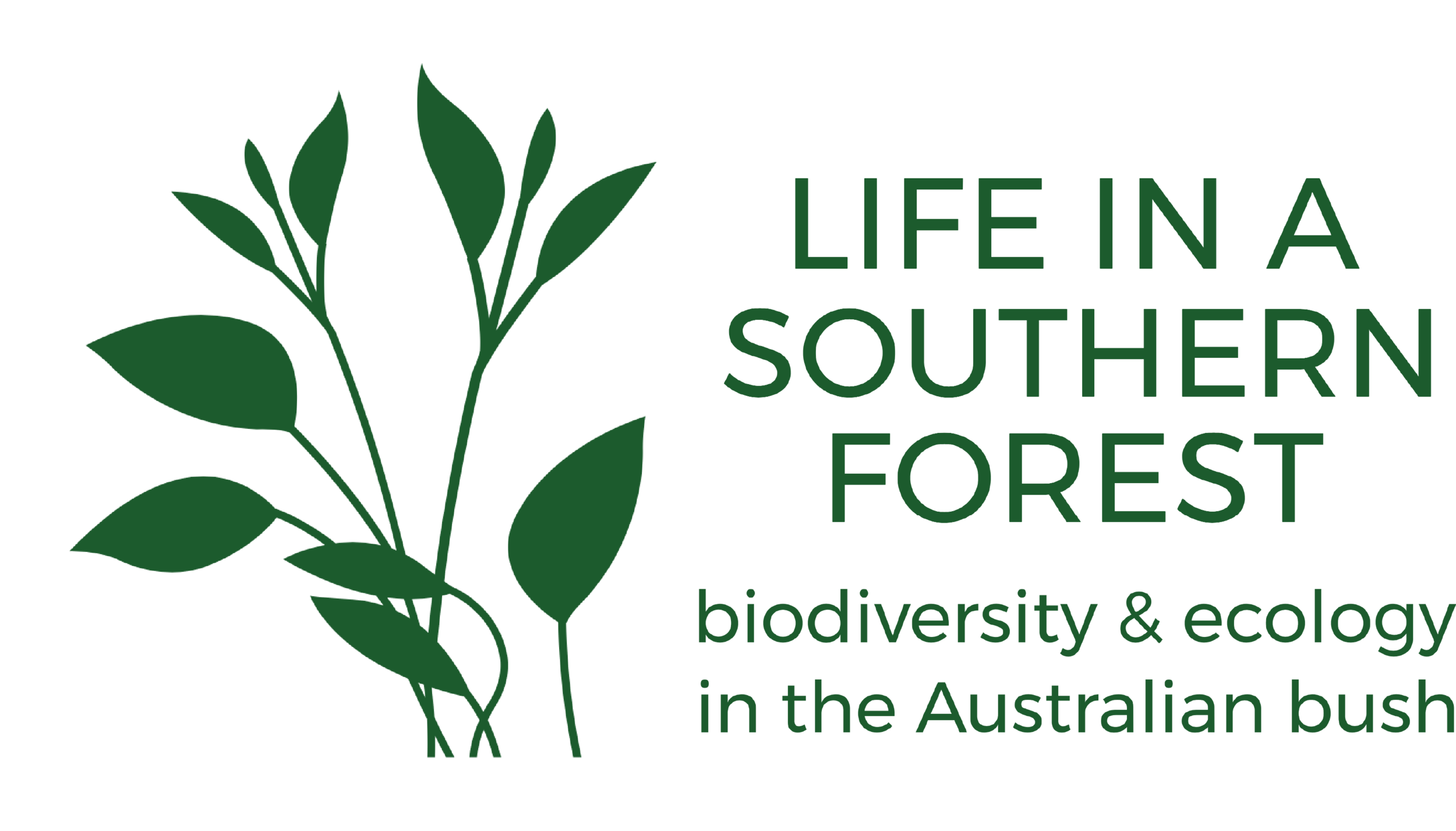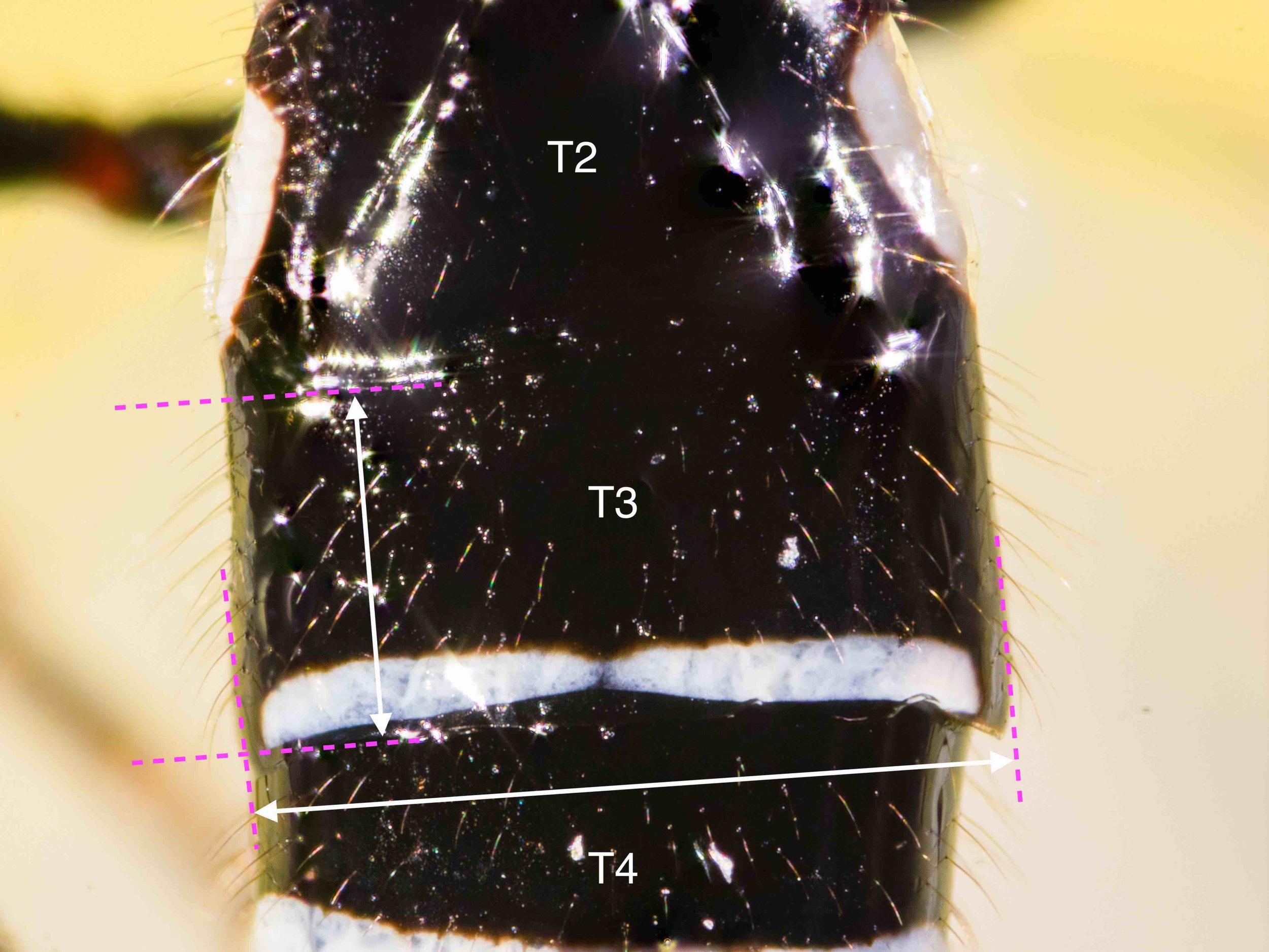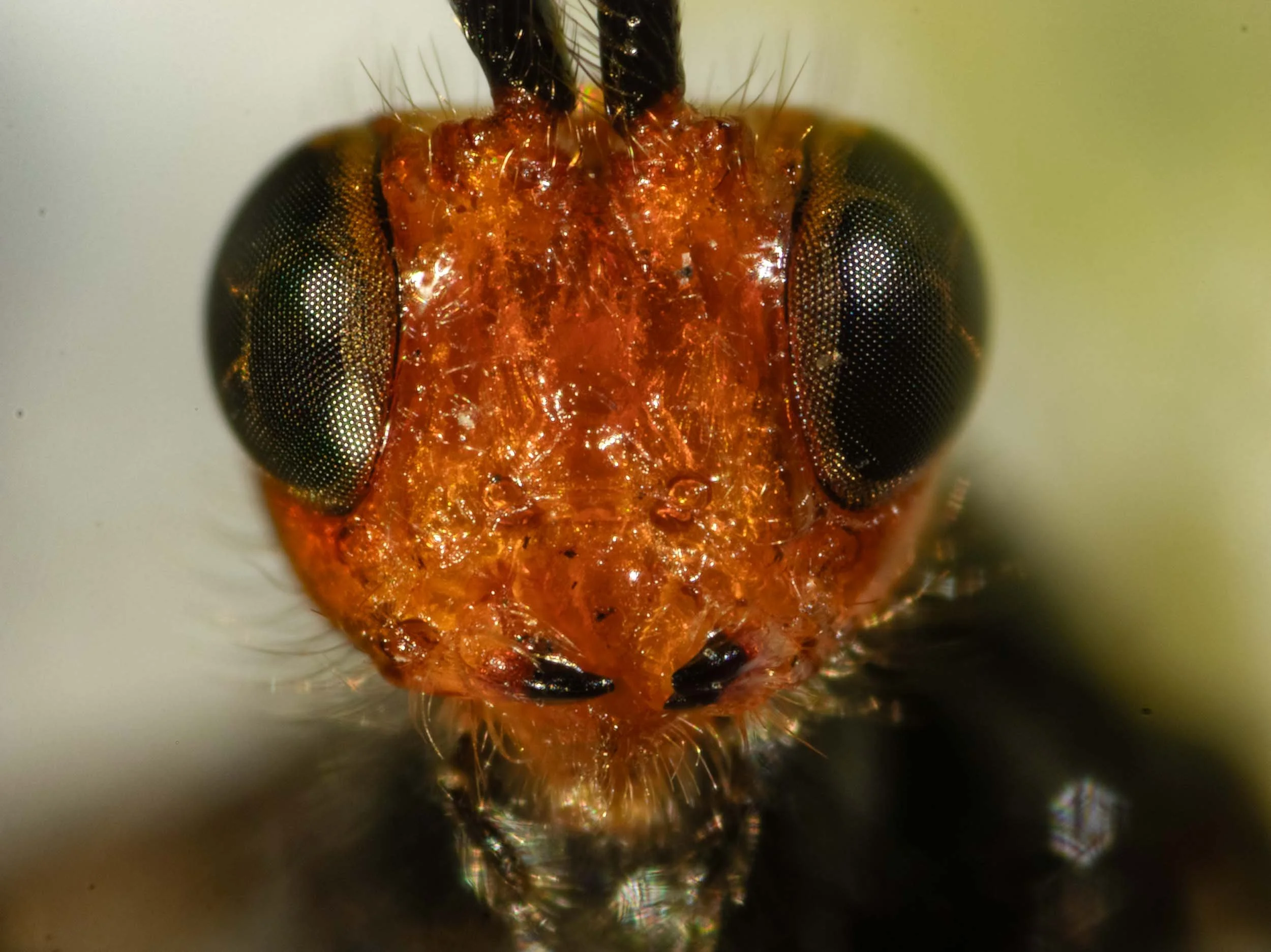Callibracon (Braconidae: Braconinae)

Workbook
A lucky find! I’ve been hoping to find a Callibracon candidate to compare to the other braconine wasps I’ve been studying this week. One very windy morning, I found this female clinging to the flyscreen. She was alive, although a bit ‘unsteady’, perhaps a bit worse for wear due to the wild weather.
Collection ID: 2310D
Closest match is Callibracon
Having given it my best shot, I’m comfortable calling this Callibracon.
The wasp shows all the distinguishing characteristics of Callibracon, as described in Quicke (1987), Quicke & Ingram (1993), and Austin et. al. (1994). The one feature I have difficulty with is the ovipositor. The fine, pre-apical featues described for the genus (ventral serrations and dorsal nodus) are just visible in my images … I think. The resolution of my best images is still a bit low to be convincing.
And I even have a species match – Callibracon limbiatus.
Full details below …
It keys out as Callibracon …
… using the key in Quicke & Ingram (1993).
That is: 1, 32, 39, 42, 43, 44, 45, 47, 49 … Callibracon.
Scape considerably longer ventrally than dorsally. Only slightly emarginate laterally (dotted arrow).
Forewing vein 3-CU1 not markedly narrowed posteriorly and not narrower than vein CU1b.
1st subdiscal cell evenly setose.
Vein 2-1A not strongly curved or angled.
Scape not angularly narrowed basally (i.e. not petiolate).
Four thickened setae at apex of C+SC+R. Note also, a single slightly thickened bristle sub-apically (dotted arrow).
Four thickened setae at apex of hind wing vein C+SR+R.
1st subdiscal cell 1.8 times longer than wide.
Vein r 0.4 times length of vein m-cu
r-m vein largely sclerotized, with 2 distinct bullae.
1-SR+M curved/bent posteriorly after arising from 1-SR.
Angle between veins 1-SR and C+SC+R approximately 60 degrees (yellow).
See inset for comparison (Fig. 114, p. 59 in Quicke, 1987), showing Stenobracon, and illustrating method used for estimating the angle. Note that in Stenobracon, the angle is less than 50 degrees.
Ovipositor shorter than forewing.
Ovipositor length (the part extending beyond apex of metasoma) = 9mm.
Forewing length = nearly 10mm.
Small, pre-apical, dorsal bump (‘nodus’) (green arrow).
Series of ventral serrations (white arrows).
Note: the pre-apical nodus is so small that I find it a bit unconvincing. However, the alternative in the key leads to Vipiellus (& it’s not that) and Iphiaulax. Quicke (1991) describes the ovipositor apex of Iphiaulax as “without distinct preapical ventral serrations” (p. 65) … so I conclude that the tiny bump at the green arrow (above), is indeed a ‘pre-apical nodus’.
Ventral serrations are more apparent in this image.
3rd metasomal tergite 2.16 times wider than minimally long.
Double-checking the species nearest in the key
I exclude Iphiaulax as it has the following features:
T3 with clearly defined antero-lateral areas and a sub-posterior, transverse groove (Quicke, 1987. p. 93); T3 with distinct posteriorly-diverging, anterolateral grooves (Quicke, 1991. p. 65); antennae tapering gradually from base to apex (Quicke, 1987. p. 65).
I exclude Camplyoneurus as it has the following features:
T3 more than 3.75 times wider than minimally long (Quicke & Ingram, 1993. Final key step, p. 304). T3 and/or T4 with a well-developed, (usually) crenulate transverse sub-posterior groove, the remainder of the tergite usually being coarsely sculptured (Quicke, 1987. p96); base of discal+sub-discal cell more or less densely setose (Quicke, 1987. p96); metasoma with striate or rugose sculpture present on at least tergites 1 to 7 (Quicke, 1987. p. 106).
I exclude Vipiellus as it has the following features:
Ovipositor sheaths shorter than body (Quicke, 1987. Key step 88, p. 92); shape of 2nd submarginal cell i.e. forewing vein 3-SR less than 1.9 times longer than r-m (Quicke, 1987. Final key step, p. 93).
The next test, does it fit the genus description? Quicke & Ingram (1993) include very little information (most of it biological) and just two figures.
… so I need to go to a slightly earlier paper (Quicke, 1987).
It turns out that the best fit is Poecilobracon (Quicke, 1987). The shape of the hypopygium and the sculpting of tergite 2 better fit that genus. But as that genus was subsequently synonymised within Callibracon (Quicke & Ingram, 1993), I conclude that this species is indeed Callibracon (at least as defined by Quicke & Ingram (1993) … and I’m not aware of any subsequent revisions.
First, I compared my wasp to the genus description in that paper. Then I checked features described in the key, working backwards from Poecilobracon/Callibracon. The following extracts are included for easy reference:

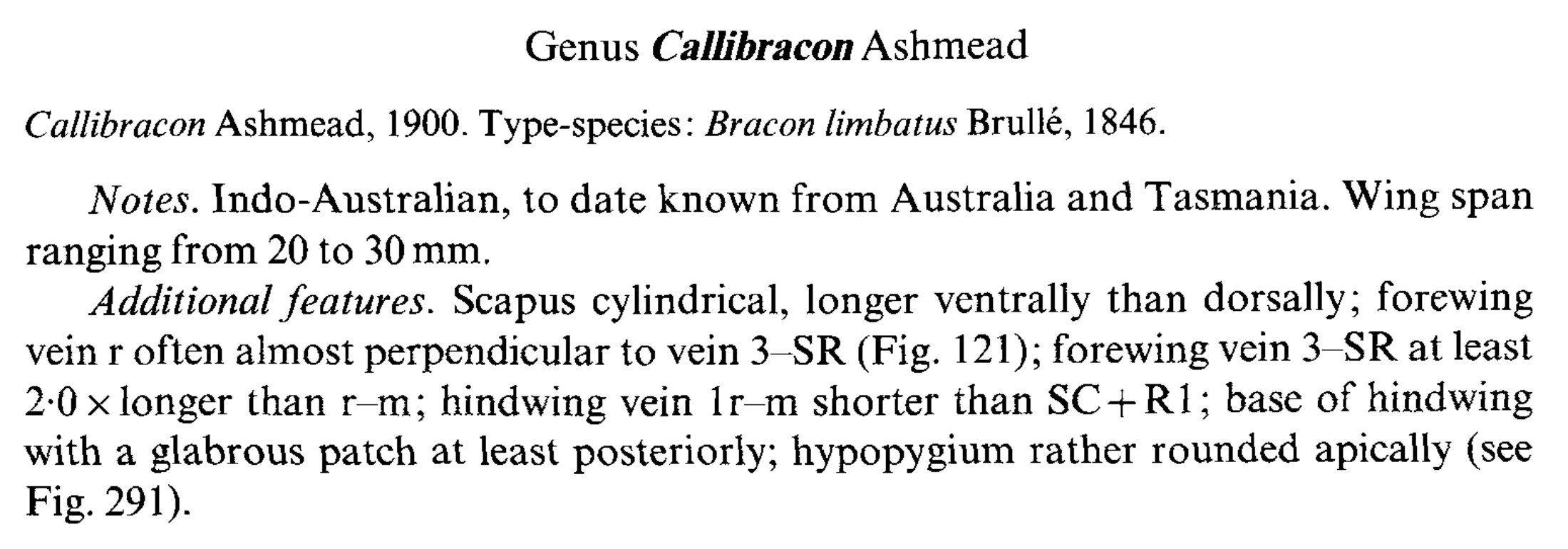
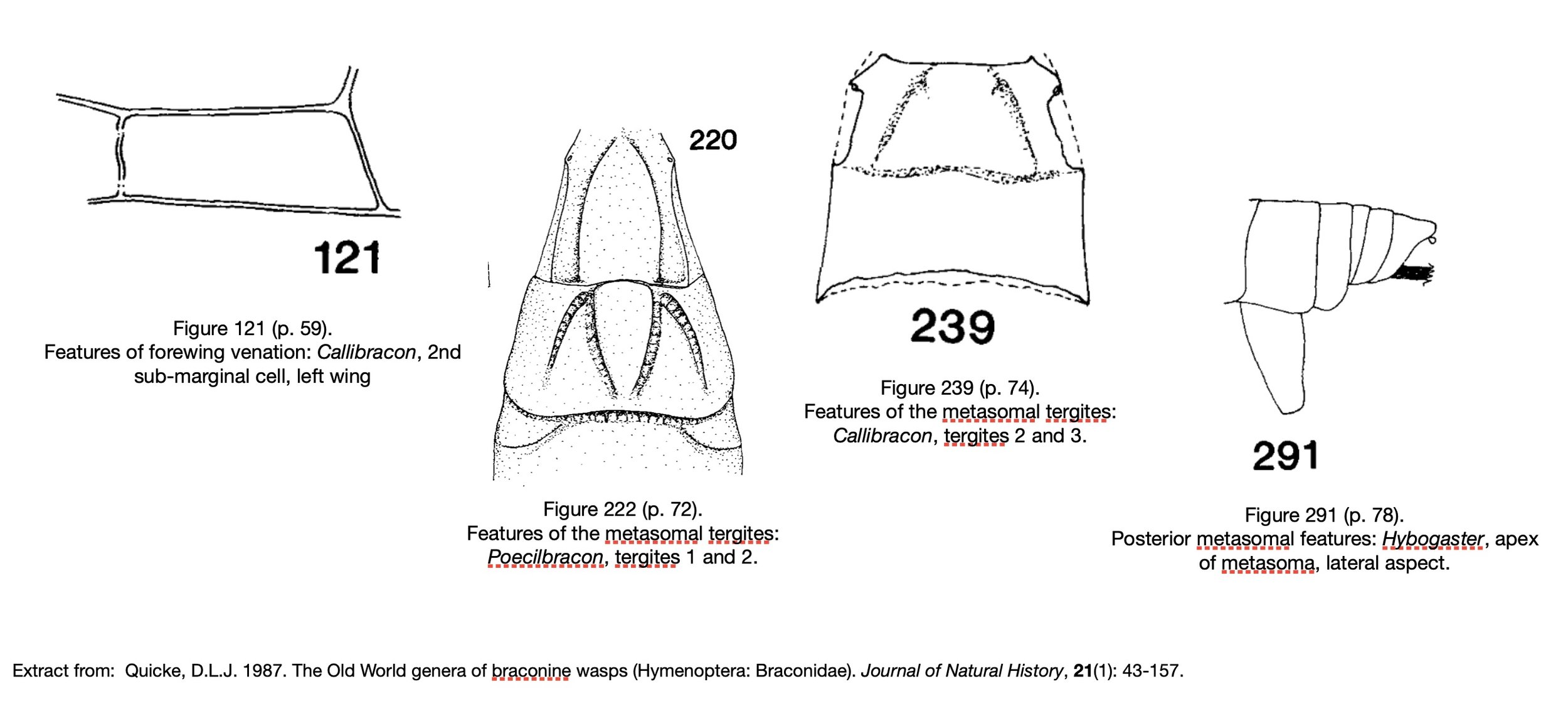
Select key steps (Quicke, 1987) are illustrated below.
Pair of posteriorly diverging, sub-lateral grooves (dotted green arrows).
Well-developed pair of posteriorly converging grooves (solid white arrows) defining a mid-basal triangular are which almost reaches the posterior margin of the tergite (see Fig. 220).
Pair of posteriorly diverging, sub-lateral grooves (dotted green arrows).
Well-developed pair of posteriorly converging grooves (solid white arrow) defining a mid-basal triangular are which almost reaches the posterior margin of the tergite (see Fig. 220).
Suture between T2 and T3 well-defined, but not obviously crenulate.
T3 without antero-lateral areas (see Fig. 239).
Lateral margins of the sclerotized part of the 2nd metasomal tergite (arrows) concave behind the spiracles (see Fig. 239).
Lateral margins of the sclerotized part of the 2nd metasomal tergite (arrow) concave behind the spiracles (see Fig. 239).
Forewing vein cu-a interstitial or nearly so.
Based on the couplet, I interpret ‘interstitial’ to mean in line with 1-M, as the other option is ‘post-furcal’.
Additional steps, as illustrated in first gallery:
125. Forewing vein 1-SR+M sharply angled posteriorly after arising from 1-M; base of hindwing with markedly reduced setosity distal to vein cu-a and over the posterior part of the sub-basal cell.
111. Ovipositor sheath less than 1.1 times longer that forewing; metasoma not especially long and parallel-sided, widely oval in dorsal aspect.
Callibracon limbiatus … most likely
There are currently just six Callibracon species (including subspecies) listed on AFD, although there are reportedly many undescribed species (Austin et. al., 1994).
In their study of longhorn beetle parasites, Austin & colleagues (Austin et. al., 1994) provide comprehensive descriptions of four of these species: C. capitator; C. flaviceps mackayensis; C. limbatus; C. moorei.
And it turns out that my wasp is an excellent match with their description of C. limbatus ! Wow, I really didn’t expect to get a species level ID.
The shape of the T2-3 suture is diagnostic, particularly in combination with the subdiscal cell shape. Colour is a close match, although the stemmaticum of my wasp is orange (not black), and the propleuron black (rather the yellow-orange).
Join between T2 and T3 (arrows) is narrow, shallow and smooth. It is also sinuous, distinctly curved anteriorly in the middle.
Posterior margin of T3 is banded white.
Vein 1-SR+M (arrows) sharply angled posteriorly, then more or less straight to junction with m-cu.
Orange throughout, including in ocellar area (the ‘stemmaticum’).
Head orange. Palps black. Propleuron (arrow) black.
As further confirmation, my wasp is a good visual match to this museum specimen … with the exception of the propleuron colour.
And finally, when I look back through our collection of braconine photos taken in the field, I find this one (link to iNat) … and note that the propleuron in orange-brown. Snap!
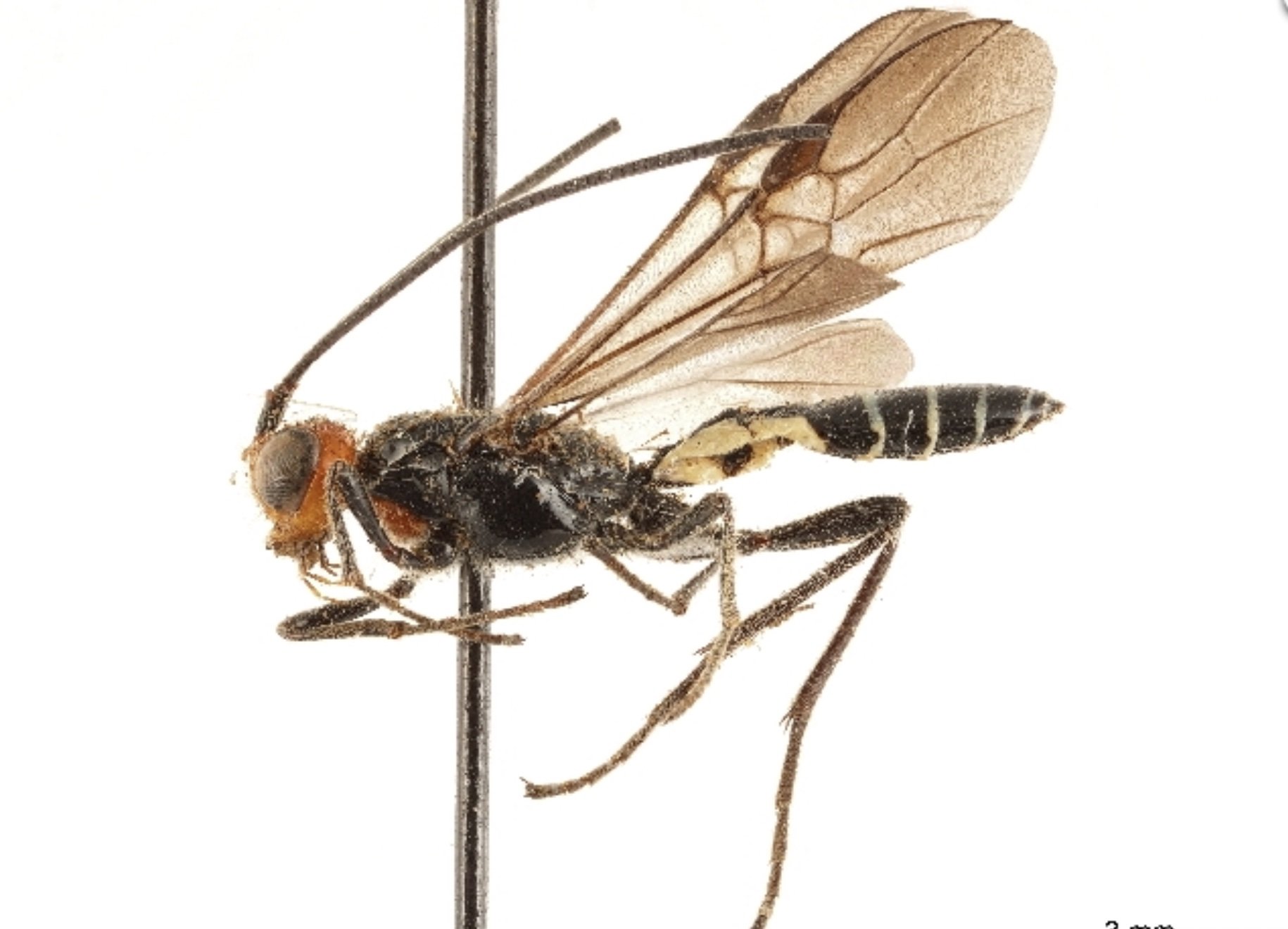
Callibracon limbatus
BOLD record SICOD743-19
Raised in culture, emerged Aug 1991.
SPECIMEN DEPOSITORY: Smithsonian Institute, National Museum of Natural History. PHOTOGRAPHY: CBG Photography Group, Smithsonian Institute. COLLECTOR: S. McElfresh. SPECIMEN IDENTIFICATION: A.D. Austin. (link)
A few more images
References
Austin, A.D., Quicke, D.L.J. & Marsh, P.M. 1994. The hymenopterous parasitoids of eucalypt longicorn beetles, Phoracantha spp. (Coleoptera: Cerambycidae) in Australia. Bulletin of Entomological Research, 84: 145-174.
Quicke, D.L.J. 1987. The Old World genera of braconine wasps (Hymenoptera: Braconidae). Journal of Natural History, 21(1): 43-157.
Quicke, D.L.J. 1991. A revision of the Australian species of Iphiaulax Foerster and Chaolita Cameron (Insects: Hymenoptera: Braconidae). Records of the Australian Museum, 43(1): 63-84.
Quicke, D.L.J. & Ingram, S.N. 1993. Braconine wasps of Australia. Memoirs of the Queensland Museum, 33(1): 299-336.
This is a workbook page … a part of our website where we record the observations and references used in making species identifications. The notes will not necessarily be complete. They are a record for our own use, but we are happy to share this information with others.
